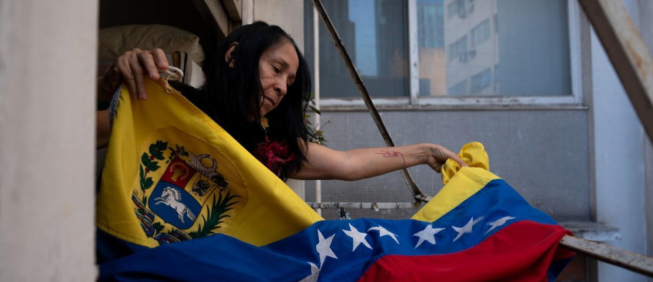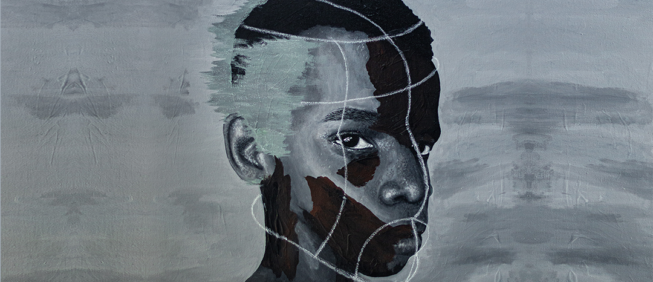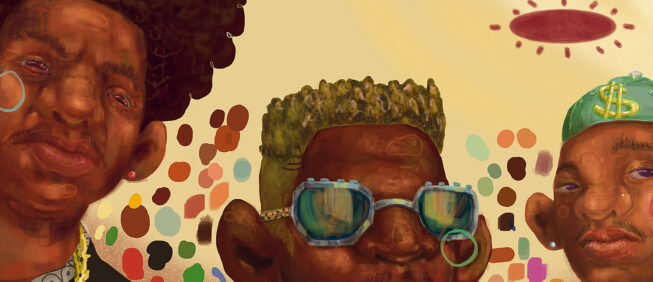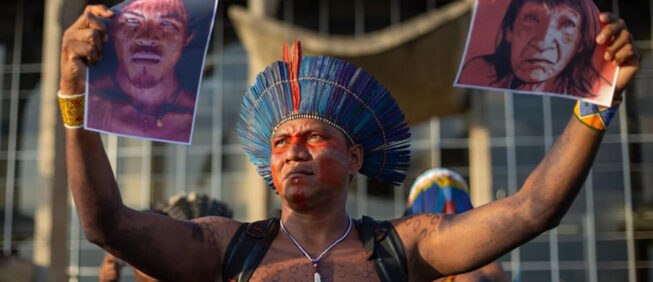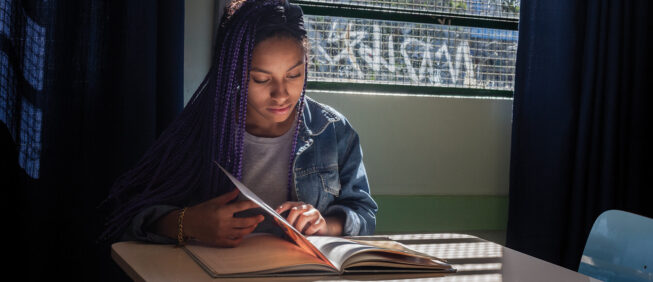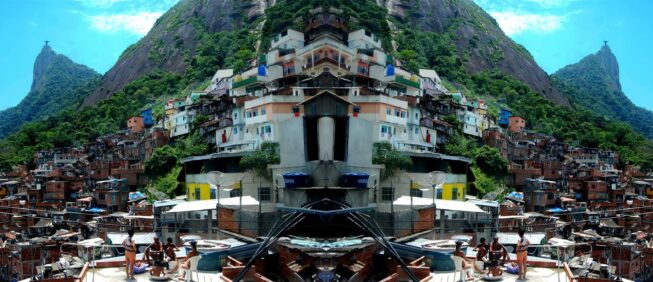From the right to the city to the city of bridges
Clarice Libânio
| BRAZIL |
19 de May de 2018
translated by Edmund Ruge
The "right to the city," what a wonderful term! Of all those that summarize, signify, aggregate and condense a series of thoughts, of different philosophies and positions! After all, who disagrees with the right to the city? The term is strong, almost atemporal, some would say! What a well composed, condensing concept! It is so synthetic that it is rarely debated anymore. Have we truly reached a consensus?
The right to the city, for Henri Lefebvre, is the right to celebration, to riches and power! It is in the dimension of the meeting (of the bridge?), of socialization and of exchange that the right to the city appears as a condition and effective realization of urban society, as a grand transformation -- more than economic, it is a permanent political and cultural revolution.
Yet, I asked myself, for today's cities, does this right really exist? Or is it a chimera, available only to some? For me, the right to the city presumes effective practices in the access to opportunities, of sharing and social transformation. Here, access is thought of as the subjects’ -- principally the poor -- concretization of their belonging and real appropriation of the “paradigm of the promise” (FORTUNA, 1995) written into urban life. Without this change in everyday life, the right to the city is meaningless.
For Marques (2010), access is not guaranteed solely by the availability of opportunities within a territory, whatever they may be. Access means opportunities plus the assets necessary to access them. Devoid of assets, social groups lose out, and opportunities continue to exist only for the few. In this perspective, there must be a growth not only in the offering of services and opportunities, but also, and principally, a provision of assets and conditions by which to take full advantage of these opportunities. Without these assets (individual and collective), without education, culture, information, participation in diverse groups, without the formation of networks, individuals will never have access to what the city has to offer.
Besides infrastructure and collective facilities, it is fundamental to guarantee the right to services, to pleasure, to culture, to education inside and outside schools, to shared experiences, to the use of public spaces, decision-making, political participation and symbolic construction. It is necessary, after all, to reconcile the city, building bridges between differences and thus reducing inequalities.
Realistically, it is not to be expected that conflicts and societal differences dissolve, reconcile and harmonize into one sole body. Rather, consider the idea of the bridge: it connects two different sides - two territories that, despite their contiguity, do not meet. They create between them a divide, a barrier, a gap, a pause to be overcome. For Simmel (1909), the bridge idea accentuates the idea of reunion over division; it overcomes the distance between extremities, at the same time that it renders them perceptible and measurable.
It is important to remember that gaps are more than physical. Barriers are more than just rivers and railways. Might it also be possible to build bridges that overcome symbolic barriers?
The construction of a city of bridges necessarily engages with the idea of the right to the city, which today I believe to be composed of at least six dimensions: 1) the economic (employment, income, consumption, and life reproduction); 2) the spatial/territorial (related to the provision and appropriation of urban services, infrastructure, housing location, movement throughout the city, and liveability conditions in general); 3) the political (the guarantee of citizens’ rights, capacity of individuals to influence decisions that affect them and the capacity to construct forms of collective living; effective and not exclusively formal participation of the population in decision making spheres); 4) the symbolic (centralizing the elements of identity, identification, affection, coexistence, acceptance and belonging of an individual to a determined group or territory; discussing the symbolic barriers, the forms of appropriation of space and the possibility of an effective collective life in the city); 5) the relational (the importance of information in the formation of networks - individual, personal, social, informational, and others - to alter social relations and power dynamics in the city); and last, 6) the cultural (encapsulating factors such as education, information, enjoyment, cultural production, and to the public good of knowledge).
This last dimension - that of culture - is a foundational and essential element in the right to the city, and, therefore, in my city of bridges. In the studies I have developed over the last 20 years in Brazilian favelas, I have perceived that culture seems to fulfill an important role in the surpassing of obstacles and difficulties in the process of allowing low income populations access to the city and in their search for their right to the city.
If the supply of services and infrastructure has advanced in the last thirty to forty years, there have also been setbacks, especially in regards to the guarantee of local permanence and participation in decision making. This also reveals the importance of culture as a tool for transformation, through diverse factors, among them the increase in education levels, the involvement -- especially among youth -- in cultural activities, the broadening of world-visions -- through non-formal education -- the establishment of external relations with new social groups and others.
In sum, the rise in cultural capital and social capital has brought with it increased access to opportunities in the city for favela residents, even without the possession of economic capital. Especially for youth from the favelas, culture has been instrumental as an opportunity and factor of transformation. Through culture and its practices, youth continue to find new forms of personal, social, and political expression.
This transformation goes in three different directions. At an initial level, it generates transformations in the personal sphere, in the identities of those that involve themselves with cultural practices. In this context, that which I call “culture as a resource” (YÚDICE, 2004), it is seen that participation in cultural production contributes to the improvement of self-esteem, to self-awareness and, as a consequence, to a construction of a new representation of the youth in respect to his or herself, to one another, and to the group. The involvement (principally) of youth in art transforms and strengthens their identity and generates empowerment.
On a second level, involvement with cultural practices creates changes in the social sphere, in the immediate group. In this context -- what I call “culture as a bridge” - it is possible to perceive that involvement with art and culture transforms forms of sociability and intergroupal coexistence in the favelas. Those involved begin to relate with other groups, to form new networks, to grow their contacts and to access other spaces and opportunities. They also contribute to a change in the original social and/or familial group, through the introduction of new concepts, experiences, information, references, practices and others.
Finally, at the third level, that of the “culture as action,” it is possible to perceive change at the level of micropolitics and participation. Involvement with artistic production constructs new forms of community mobilization, in contrast to the drop in participation in traditional spaces, such as unions, residents associations, and political parties. What is seen is an introduction of new forms of collective action, through cultural movements, whose result is the amplification of citizens’ rights and the emancipation of the city’s subjects.
Today I have worked and reflected in respect to the possibilities of a fourth level of change, introduced by cultural practices in the territories. Beyond the individual and immediate group context, can culture contribute to making the right to the city effective in its various levels? Can culture be a strong enough bridge to contribute to the alteration of the processes of socio-spatial segregation? In what perspective can culture create a real change in the territories and in the power relations in which they express themselves? How have cultural practices broken with the exclusive urban planning used to maintain the status-quo? In what perspectives have cultural movements contributed to the emancipation of poor populations and to the realization of the right to the city?
In my city of bridges, it is culture and its practices that form the passage between different social classes, between different modes of life, between apparently disparate world conceptions and between everyday situations, once thought irreconcilable. My city of bridges is a city where the meeting, the celebration, the socialization and the sharing of public spaces through culture create more durable and transformative processes than mere leisure and aesthetic enjoyment. In the city of bridges, it is possible to alter the unequal relations that express themselves in the urban, illuminated and supported by the potential of diversity, of world culture and of hybrid identities.
In the city of bridges, gaps can be surpassed. They may converge and diverge, but they do not isolate and they do not break. In this city, culture provides individuals with information. It constructs and brings about new types of knowledge, among them the awareness of solidarity, of sharing, of the occupation of public space, of the knowledge that things must be accomplished cooperatively, and that we must help one another. It teaches us that it is in the celebration, in exchange, in meeting and in the collective that we generate energy for life and for the overcoming of the difficulties of everyday life.
